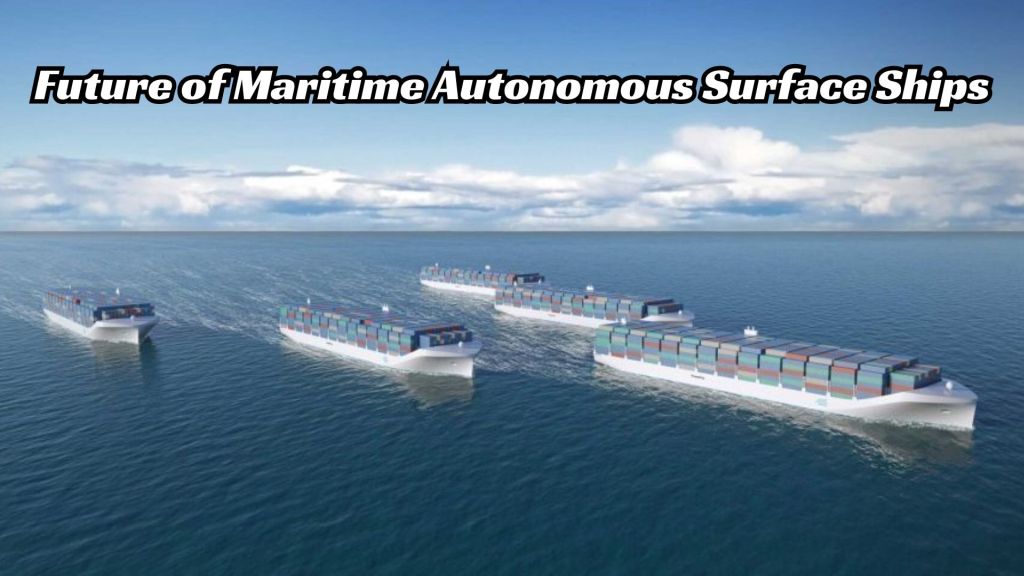
(www.MaritimeCyprus.com) In a rapidly evolving world, Maritime Autonomous Surface Ships (MASS) stand at the forefront of innovation and transformation. As we venture into the uncharted waters of the future, it is crucial to comprehend the profound implications and challenges presented by the advent of MASS, not only for the shipping industry but also for the fundamental infrastructure that ensures safe and efficient navigation at sea.
IALA has proactively sought to establish the short to medium term outlook of MASS. This will benefit our members and better equip them to prepare for a future that involves an increasing number of autonomous ships. In order to ascertain the probable future of MASS, IALA has gathered information from our members and stakeholders including at a workshop on MASS held in October 2023.
For the foreseeable future, we will have a mixed fleet of conventional ships with different degrees of automation in combination with an increasing number of MASS. The current outlook on implementing MASS technology in tanker, medium and large passenger ship categories is cautious, with concerns about operational and safety challenges specific to these ship types. The take-up timing for MASS varies, suggesting a coexistence of conventional and autonomous ships in the maritime industry for an extended period.
Crewless ships face a longer adoption timeline due to technological, legal, political, and socioeconomic constraints. Newly built ships have a typical lifespan of 20 to 25 years, indicating that those entering service will continue operating for several decades. Major shipbuilders have expressed that they are not currently looking to build large crewless ships. It is also noted that existing conventional ships are not easily retrofitted for crewless operations.
However, a prevailing trend involves equipping ships with automized processes and decision support systems, enabling partial automation whilst keeping seafarers on board to provide control when needed. The realization of autonomous large ships, capable of independent decision-making, is expected to be at least 20 years away from widespread implementation.
While MASS technology is suitable for small and specialized ships, such as inshore survey and ferries, initial deployment may be limited to specific participating states rather than being adopted for all international voyages. The short-term adoption of MASS in larger ships intended for international voyages is not anticipated.
From many sources we have been able to determine the drivers behind why shipowners and other stakeholders may choose to invest in MASS. The primary drivers we have identified are:
- Investors, including shipowners, shipbuilders, and banks, are driven by the prospect of a favourable business case, seeking opportunities for profitability and returns on investment.
- The shortage of qualified seafarers, especially if steps are not taken to improve seafarer recruitment and retention, drives interest in autonomous solutions.
- While there is recognition that human error contributes to accidents, and MASS could help in reducing human error, not everyone is convinced that autonomy is the solution. There is particular concern that, in the case of navigating by remote control, errors may be merely shifted ashore. The complexity surrounding human error, but also preventative human intervention make safety a multifaceted consideration.
- Potential efficiency gains are a compelling factor for investment. This includes tangible benefits such as fuel reduction and MASS tending to adopt cleaner fuels.
- There is a potential benefit of being pioneers with MASS. The prospect of leading the way and being recognized as a "first mover" in this transformative field may result in a boost in publicity for a company. This reputation-building aspect can significantly influence investment decisions and contribute to a stakeholder’s prominence within the industry.
- There is an increasing willingness to address regulatory challenges and enhance cooperation between countries such as examples of bilateral and multilateral agreements, including the MoU between Belgium, Denmark, the Netherlands and the United Kingdom, to demonstrate frameworks for potentially enabling autonomous operations internationally.
This document below sheds light on the possible drivers that may lead shipowners and other stakeholders to invest in MASS.
Source: IALA
For more Guides and Resources on Maritime Autonomous ships, click HERE.














